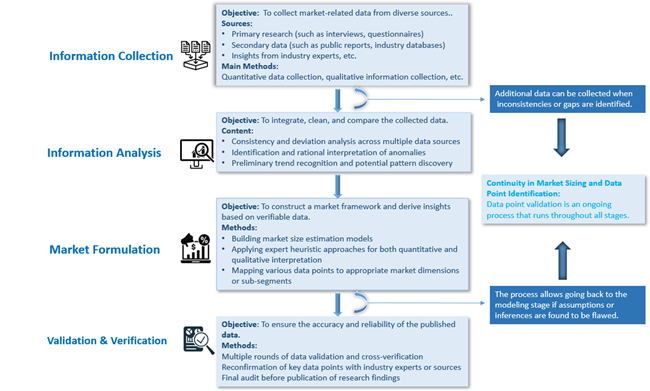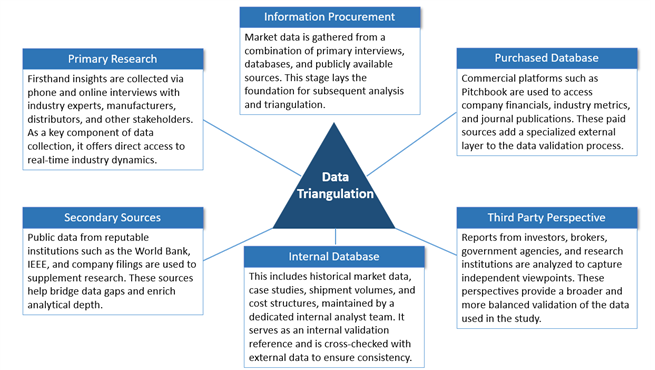Artificial Bone Regeneration Material are engineered biomaterialsdesigned to replace, augment, or regenerate human bone tissue in orthopedic,dental, spinal, and reconstructive surgeries. Unlike autologous(patient-derived) or natural bone grafts (from human or animal donors),artificial bone is synthetically manufactured to emulate the structural,mechanical, and biological characteristics of natural bone. These materials areintended to overcome key limitations of traditional grafts—such as limited availability,donor site morbidity, immunogenicity, and infection risk—by offering scalable,sterile, and customizable alternatives with controlled properties.
Artificial Bone Regeneration Material typically fall into three maincategories based on composition: inorganic materials, organic materials, andcomposites. Inorganic materials, such as hydroxyapatite, β-tricalcium phosphate(β-TCP), and bioglass, are prized for their osteoconductivity and chemicalsimilarity to natural bone minerals. Organic materials include bioresorbablepolymers like collagen, poly(lactic-co-glycolic acid) (PLGA), andpolycaprolactone (PCL), which provide flexibility and resorption tailored tohealing rates. Composite materials combine organic and inorganic phases tooptimize both mechanical strength and bioactivity, more closely replicating thehybrid nature of real bone tissue.
Market Overview:
According to LookWhole Insight, the global ArtificialBone Regeneration Material market is projected to reach USD 2.21 Billion in2024. It is expected to grow to USD 4.21 Billion by 2033, registering acompound annual growth rate (CAGR) of 6.84% during the forecast period(2025–2033). - LookWhole Insight
Key Development Trends
1. ArtificialBone as a Substitute for Natural Bone
Driven byaccelerating population aging and the increasing volume of orthopedicsurgeries, the bone repair market in orthopedics is expanding. Artificial bonerepair materials offer significant advantages and show great potential inclinical applications, making them a promising primary option for bone defecttreatment. Numerous experts, in authoritative domestic and internationalmedical and orthopedic journals, have pointed out the limitations of autologousbone grafting—such as limited bone sources, pain from secondary surgeries, anddonor site complications—as well as the risks associated with allografts,including immune rejection and potential disease transmission. In contrast,artificial bone materials not only reduce the occurrence of these risk eventsbut also deliver therapeutic outcomes comparable to, or even better than,autologous bone.
Below is a briefsummary of academic papers supporting the superior clinical performance ofartificial bone over natural bone.
|
Year |
Journal |
Scholar(s) |
Academic Conclusion |
|
1999 |
The Lancet (International authoritative medical journal) |
— |
Autologous bone grafts are associated with numerous issues such as infection, wound exudation, hematoma, and secondary surgery. In contrast, artificial bone materials can achieve clinical outcomes comparable to autologous bone grafts while avoiding these complications. The review section of this article explicitly stated that artificial bone materials would surpass autologous bone in therapeutic efficacy in the future. |
|
2008 |
The Journal of Bone and Joint Surgery (American) (International authoritative orthopedics journal) |
Professor Antonios G. Mikos – internationally renowned tissue engineering expert, member of the U.S. National Academy of Sciences and National Academy of Medicine |
Autologous bone grafts often lead to postoperative pain and donor site complications, while allografts carry disease transmission risks and can cause various complications with an incidence rate as high as 30–60%. The study proposed that synthetic bone graft substitutes could serve as a viable clinical strategy to overcome the inherent limitations of autografts and allografts. |
|
2019 |
— |
Professor Changsheng Liu – internationally renowned biomaterials expert, academician of the Chinese Academy of Sciences, and current president of Shanghai University |
Pointed out that “autologous bone grafts face limitations such as limited bone availability, pain from secondary surgery, and donor site complications,” and that “allografts are restricted in clinical application due to risks of immune rejection and potential disease transmission.” He proposed that “functionalized artificial materials not only solve the problems of donor site injury and limited availability associated with autografts but also effectively avoid many of the issues related to allografts.” |
|
2020 |
Nature Reviews Materials (International authoritative review journal) |
Professor Antonios G. Mikos |
Over the past 30 years, the rapid development of bone tissue engineering has provided numerous technical solutions for bone repair, aiming to design materials that surpass autografts and allografts. The driving force behind the continuous innovation in bone tissue engineering has been the advancement in material synthesis and processing technologies. |
2. RapidDevelopment of New Artificial Composite Materials
Amongartificial bone materials, composites show clear advantages and are a promisingsegment in the field. Single materials are often limited by their inherentmicrostructure and poor biodegradability, restricting their clinicalapplications. In contrast, composite materials can mimic the microstructure ofautologous bone and offer controllable degradation rates that align with newbone formation. During the bone regeneration process, they are graduallyreplaced by newly formed bone tissue. Except in applications requiring veryhigh mechanical strength, composite materials are suitable for most orthopedic,dental, plastic, and neurosurgical uses.
Asneurosurgical patients increasingly seek improved postoperative quality of lifeand as healthcare affordability improves, along with ongoing advancements inbone repair technologies and products, the use of bone repair materials forgrafting and guided bone regeneration has become a common clinical treatmentfor bone defects.
Anideal cranial reconstruction material should have excellent tissuecompatibility, resorbability, watertightness, support strength, andconformability. Emerging composite materials such as biomimetic mineralizedcollagen and PEEK (polyether ether ketone) offer advantages over traditionaloptions like autologous bone and titanium mesh. These new materials featureexcellent osteogenic activity and osseointegration, superior biocompatibilityand osteoconductivity, as well as better conformability and sealing. They havequickly gained market share and represent the future trend in neurosurgicalcranial repair materials.
|
Category |
Technical Route |
Applications |
Main Advantages |
Main Disadvantages |
|
Metal Materials |
High-temperature sintering |
Orthopedics |
Good mechanical strength; preferred when mechanical strength is critical. |
May release toxic metal ions; stress shielding may lead to osteoporosis; difficult to achieve osseointegration, risk of loosening and wear on surrounding tissues; poor plasticity during surgery; non-degradable. |
|
Inorganic Non-metal Materials – Bio-ceramics |
High-temperature sintering |
Orthopedics, Dentistry |
Good biocompatibility and osteoconductivity. |
High brittleness, low mechanical strength; usually non-degradable or has uncontrollable degradation rate, hindering new bone growth. |
|
Inorganic Non-metal Materials – Calcium sulfate/cement, calcium phosphate cement |
Powder and liquid mixed during surgery, solidifies after implantation |
Orthopedics, Dentistry |
Good biocompatibility; good plasticity during clinical use. |
Low mechanical strength; degradation is mainly via physical dissolution, often with an uncontrollable rate, which hinders new bone growth. |
|
Inorganic Non-metal Materials – Bioactive glass |
Melted at high temperature and rapidly cooled |
Orthopedics, Dentistry |
Good biocompatibility and bone regeneration guidance. |
Low mechanical strength; poor plasticity during surgery. |
|
Polymeric Materials – Natural polymers |
Extraction and purification |
Orthopedics, Dentistry |
Good biocompatibility and osteoconductivity. |
Low mechanical strength; degradation rate difficult to control. |
|
Polymeric Materials – Synthetic polymers |
Polymerization synthesis |
Orthopedics, Dentistry, Plastic surgery, Neurosurgery |
Tunable physical and mechanical properties based on clinical needs. |
Non-degradable polymers (e.g., PMMA, HDPE) remain in the body permanently as foreign materials; some degradable polyesters produce acidic byproducts, which hinder bone growth. |
|
Composite Materials – Biomimetic composites |
In vitro biomimetic mineralization |
Orthopedics, Dentistry, Plastic surgery, Neurosurgery |
Highly biomimetic composition and structure, good biocompatibility and osteoconductivity; guides new bone regeneration while being gradually replaced by it; fully degradable; degradation rate matches new bone formation; good plasticity during surgery. |
Low mechanical strength. |
|
Composite Materials – Inorganic/organic composites |
High-temperature injection molding, casting, physical mixing, etc. |
Orthopedics, Dentistry, Plastic surgery, Neurosurgery |
Combines the properties of all components and may exhibit new characteristics absent in individual materials. |
Synthesis process is often complex; many are non-degradable. |
|
Tissue Engineering Materials – Recombinant human bone morphogenetic protein combined with carrier materials |
Recombinant protein + scaffold |
Orthopedics |
Strong bone regeneration guidance capability. |
High production cost; requires cold storage and transport to maintain protein activity, resulting in high product prices. |
3. IncreasingPenetration and Usage of Cranial Repair Materials
Inrecent years, with growing patient expectations for better postoperativerecovery from craniotomies and rising healthcare affordability, the penetrationrate of cranial repair materials has steadily increased. According to expertconsensus, early surgical repair after cranial damage helps control infectionsand reduce complications. Timely cranial reconstruction restores skullintegrity, patient appearance, and protective functions, effectively normalizescerebrospinal fluid (CSF) dynamics and cortical blood perfusion, reducesintracranial complications, and aids in neurological recovery.
Lookingahead, as awareness of the benefits of cranial repair grows and the number ofpatients with cerebrovascular disease, brain malignancies, skull fractures, andintracranial injuries continues to rise—along with an increase in craniotomyprocedures—the penetration and usage of cranial repair materials are expectedto further increase.
At thesame time, the use of materials for repairing small-area cranial defects isalso growing. Previously, due to a lack of effective products and insufficientattention from doctors and patients, the clinical repair rate for small-areacranial defects was relatively low. However, if left untreated, such defectsmay lead to complications like scalp depression, brain bulging, and CSFleakage. In recent years, with the rapid development of bone repair materialssuch as mineralized collagen that are suitable for small-area cranial repairs,and the growing recognition of the importance of such procedures, the use ofthese materials has significantly increased.
Global Artificial Bone Regeneration MaterialMarket: Competitive Landscape
The ArtificialBone Regeneration Material market has a moderate level of concentration,featuring a combination of international giants, specialized biomedicalcompanies, and innovation-driven emerging enterprises. Competition amongexisting players is relatively intense.
The productionof orthopedic bone defect repair materials requires various raw materials suchas metal alloys and biomaterials. Some key material suppliers may possess acertain degree of bargaining power, making upstream supplier bargaining powermoderate.
In thisindustry, downstream buyers are mainly hospitals and other medicalinstitutions, which typically hold strong bargaining power due to theircentralized procurement and strict standards.
Barriers toentry in the orthopedic bone defect repair material industry are relativelyhigh, mainly due to the requirements of clinical trials, regulatory approvals,and technical accumulation, resulting in a low threat from new entrants
Moreover, due tothe specialized nature of medical products, they are not easily replaced,making the threat of substitutes relatively low.
Multinationalmedical device companies such as Stryker, Zimmer Biomet, Johnson & Johnson(DePuy Synthes), Medtronic, and Smith & Nephew dominate the market withtheir strong distribution networks, comprehensive orthopedic productportfolios, and extensive regulatory experience
Asia-Pacificmanufacturers, particularly those from China, Japan, and South Korea, arerapidly expanding both domestically and internationally by leveraging growingR&D capabilities and cost advantages. Chinese companies like AllgensMedical, Yantai Zhenghai Bio-Tech Co., Ltd., and Rebone Biomaterials are amongthe leaders in this expansion. In Japan, companies such as Kuraray and OlympusTerumo Biomaterials also hold significant market positions.
Report Framework and Key Highlights:
MarketDynamics: Identification of major market drivers, restraints,opportunities, and challenges.
TrendAnalysis: Examination of ongoing and emerging trendsimpacting the market.
CompetitiveLandscape: Detailed profiles and market positioning of majorplayers, including market share, operational status, product offerings, andstrategic developments.
StrategicAnalysis Tools: SWOTAnalysis, Porter’s Five Forces Analysis, PEST Analysis, Value Chain Analysis
MarketSegmentation: By type, application, region, and end-userindustry.
Forecastingand Growth Projections: In-depth revenue forecasts and CAGRanalysis through 2033.
This report equips readers with critical insights tonavigate competitive dynamics and develop effective strategies. Whetherassessing a new market entry or refining existing strategies, the report servesas a valuable tool for:
Industry players
Investors
Researchers
Consultants
Business strategists
And all stakeholders with an interest or investmentin the Artificial Bone Regeneration Material market.
Global Artificial Bone Regeneration MaterialMarket: Segmentation Analysis and Strategic Insights
This section of the report provides an in-depthsegmentation analysis of the global Artificial Bone Regeneration Materialmarket. The market is segmented based on region (country), manufacturer,product type, and application. Segmentation enables a more preciseunderstanding of market dynamics and facilitates targeted strategies acrossproduct development, marketing, and sales.
By breaking the market into meaningful subsets,stakeholders can better tailor their offerings to the specific needs of eachsegment—enhancing competitiveness and improving return on investment.
Global Artificial BoneRegeneration Material Market: Market Segmentation Analysis
The research report includes specificsegments by region (country), manufacturers, Type, and Application. Marketsegmentation creates subsets of a market based on product type, end-user orapplication, Geographic, and other factors. By understanding the marketsegments, the decision-maker can leverage this targeting in the product, sales,and marketing strategies. Market segments can power your product developmentcycles by informing how you create product offerings for different segments.
|
ATTRIBUTE |
Details |
|
|
Time Coverage |
Historical Year: 2020– 2024 Base Year: 2024 Estimated Year: 2025 Forecast Year: 2025 - 2033 |
|
|
Market Segmentation |
||
|
By Type |
Inorganic Material Organic Material Composite Material Others |
|
|
By Application |
Neurosurgery Dental Medicine Orthopedics |
|
|
By Company |
Johnson & Johnson Medtronic Stryker Corporation Zimmer Biomet Smith & Nephew Straumann Group Baxter International Inc. Integra LifeSciences Geistlich Pharma Bioventus Inc. LifeNet Health Collagen Matrix Allgens Medical Kuros Biosciences Huadong Medicine Co., Ltd. Yantai Zhenghai Bio-Tech Co., Ltd. Rebone Biomaterials China-tianjin Sannie Bioengineering Mindray Olympus CGBIO Exactech Lixin Science Co., Ltd. Berkeley Lights Jiuyuan Genetic Biopharmaceutical Wright Medical Kuraray |
|
|
By Region |
North America |
|
Report Framework and Chapter Summary
Chapter1: Report Scope and Market Definition
Thischapter outlines the statistical boundaries and scope of the report. It definesthe segmentation standards used throughout the study, including criteria fordividing the market by region, product type, application, and other relevantdimensions. It establishes the foundational definitions and classificationsthat guide the rest of the analysis.
Chapter2: Executive Summary
Thischapter presents a concise summary of the market’s current status and futureoutlook across different segments—by geography, product type, and application.It includes key metrics such as market size, growth trends, and developmentpotential for each segment. The chapter offers a high-level overview of the ArtificialBone Regeneration Material Market, highlighting its evolution over the short,medium, and long term.
Chapter3: Market Dynamics and Policy Environment
Thischapter explores the latest developments in the market, identifying key growthdrivers, restraints, challenges, and risks faced by industry participants. Italso includes an analysis of the policy and regulatory landscape affecting themarket, providing insight into how external factors may shape futureperformance.
Chapter4: Competitive Landscape
Thischapter provides a detailed assessment of the market's competitive environment.It covers market share, production capacity, output, pricing trends, andstrategic developments such as mergers, acquisitions, and expansion plans ofleading players. This analysis offers a comprehensive view of the positioningand performance of top competitors.
Chapters5–10: Regional Market Analysis
Thesechapters offer in-depth, quantitative evaluations of market size and growthpotential across major regions and countries. Each chapter assesses regionalconsumption patterns, market dynamics, development prospects, and availablecapacity. The analysis helps readers understand geographical differences andopportunities in global markets.
Chapter11: Market Segmentation by Product Type
Thischapter examines the market based on product type, analyzing the size, growthtrends, and potential of each segment. It helps stakeholders identifyunderexplored or high-potential product categories—often referred to as “blueocean” opportunities.
Chapter12: Market Segmentation by Application
Thischapter analyzes the market based on application fields, providing insightsinto the scale and future development of each application segment. It supportsreaders in identifying high-growth areas across downstream markets.
Chapter13: Company Profiles
Thischapter presents comprehensive profiles of leading companies operating in themarket. For each company, it details sales revenue, volume, pricing, grossprofit margin, market share, product offerings, and recent strategicdevelopments. This section offers valuable insight into corporate performanceand strategy.
Chapter14: Industry Chain and Value Chain Analysis
Thischapter explores the full industry chain, from upstream raw material suppliersto downstream application sectors. It includes a value chain analysis thathighlights the interconnections and dependencies across various parts of theecosystem.
Chapter15: Key Findings and Conclusions
Thefinal chapter summarizes the main takeaways from the report, presenting thecore conclusions, strategic recommendations, and implications for stakeholders.It encapsulates the insights drawn from all previous chapters.
About US
LookWhole Insight is a global leader in dataanalytics and market research, offering deep insights into industries,economies, and consumer behavior across the world. We deliver comprehensivedata and analysis on thousands of products and services, making us the firstchoice for organizations pursuing growth and exploring untapped, blue oceanmarkets.
Our offerings include syndicated research reports,customized research solutions, and strategic consulting services. The LookWholeInsight database is trusted by prestigious academic institutions and Fortune500 companies alike, providing a robust foundation to navigate both global andregional business environments. Our data spans 26 industries across 35 keyeconomies, backed by thousands of metrics and detailed analyses.
As an independent provider of global businessintelligence, we empower clients with market analysis and consumer insightsthat range from local to global, and from tactical to strategic. Our researchsolutions guide critical decisions on when, where, and how to scale yourbusiness with confidence.
Email: market@lookwhole.com
www.lookwholeinsight.com






